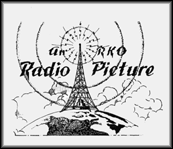Henry Selick may be the best stop motion animator in the movies, but that's a bit like being the best cavalryman in the Army. General Bruckheimer has no bloody use for you.
Nevertheless, in the twenty years since James Cameron's Russian water tentacle made stop motion technically obsolete I've learned that how your movies are made matters. It is more fun to watch stuntmen fall off Indy's truck than to see digital orcs fall off the walls of Helm's Deep. The exotic location shoots in The Fall are more thrilling than all the digital vistas in Gladiator. The entire point of Death Proof is that you are watching a real stuntwoman on the hood of a real car driving real fast. That's why it is the best car chase sequence since Terminator 2. And when it comes to animation, stop motion is inherently more delightful than cel, which is inherently more delightful than computer.
I am not a stubborn antiquarian. For all the impossible things made possible CGI should be embraced. But it is a fact that you are more excited when you know what you are watching really happened in front of a camera; a badly-recorded liquor store robbery on COPS is more dramatic than Bad Boys II. Likewise it is more exciting to see puppets and miniatures and physical models brought to life than computer graphics. Jabba the Puppet on his dais is infinitely better than Jabba the Digital scooching around Docking Bay 94. The Alien Queen is the best visual effects monster ever; Shelob is not half as scary. And it is the level of tactile realness that distinguishes the pleasures of stop motion, cel and computer animation. After seeing Duck Amuck we could always sense the artist's pen breathlessly dashing over the cels. Even better is in stop motion to sense the hands of the creator conducting between the frames, a flurry of fingerprints willing Jack Skellington to dance.
Coraline has its share of delights — the Busby Berkeley mouse circus is classic in every way, and French & Saunders are kinky fun — but Selick is not as good a director as his medium deserves. The movie is towed along as if by Eeyore, and the story is two characters and three plot developments short of a meal. It isn't fair to ask Coraline to be the transcendent film that ushers in a stop motion renaissance, but I can't help wanting it to be. The urgency is this: In September a Tim Burton-produced CGI film titled "9" will be released, created with software that claims to mimic the stilted movements of traditional stop motion. This technique will probaby look good and may very well catch on, but the fingerprints won't be there.
Saturday, February 21, 2009
Subscribe to:
Post Comments (Atom)

I think Nostalgia always has its market and no matter how advanced we have become, we always miss what we had when we were young. We miss being young, ruthless and easily-impressible again. That's why I think I still like the way movies were made back in the days, back when things look simpler just like our lives back then.
ReplyDeleteThere used to be a show on the Discovery Channel, "Movie Magic." They'd show a scene from a film, often a B-movie, and then go through and show you how the special effects were done.
ReplyDeleteMost special effects are all done the same way now. Such a show would be tedious today.
I adore the special edition behind-the-scenes featurettes on the Lord of the Rings DVDs. The most impressive effects are all low-tech. Scads of miniatures, tricky camera angles, that sort of thing. THAT is the craft that truly impresses me.
I appreciate what Coraline represents. Some people are coming around to realize that a cheap CG cartoon is no substitute for a love of what you're doing.
They've been saying for a few years now that Disney will release a new traditional-animation feature in the spirit of Lion King and Beauty and the Beast.
I hope it is unreservedly embraced.
dave
You can tell when the filmmakers love what they're doing, often because they've done things the hard way or an unconventional way, and their enthusiasm is infectious.
ReplyDelete